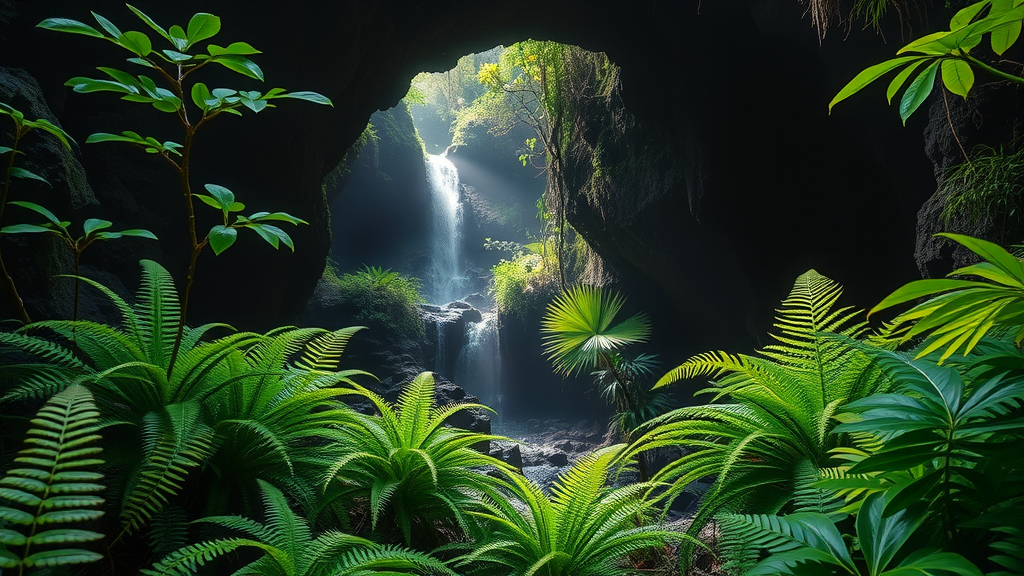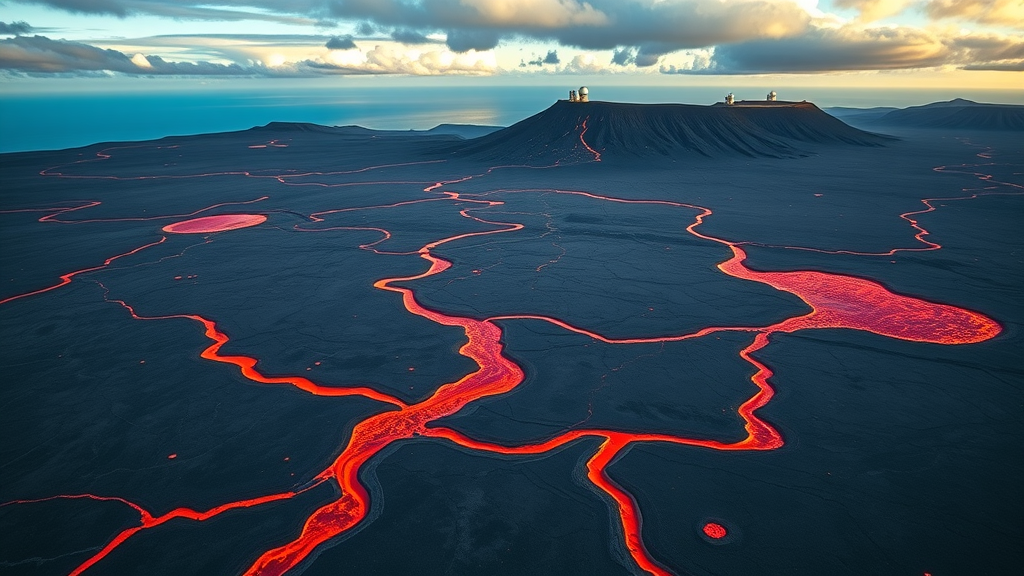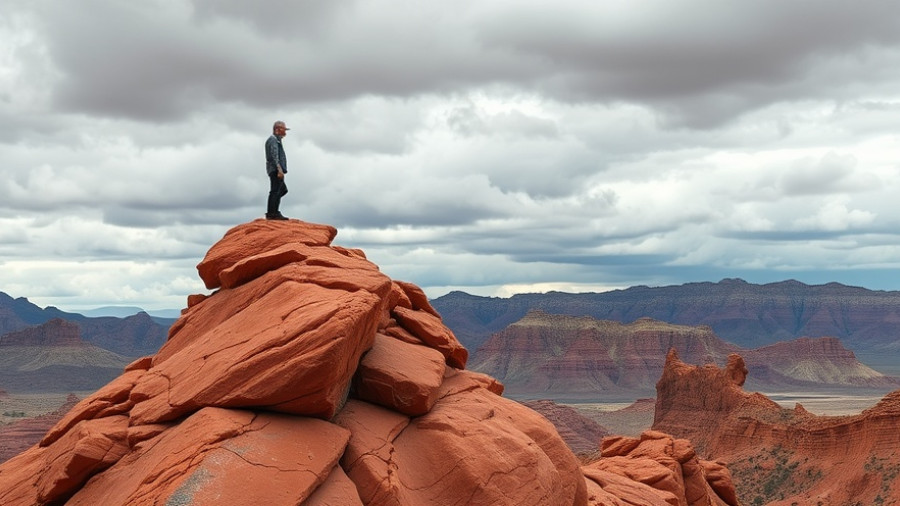Experience Earth’s Power: Why Hawai'i Volcanoes National Park Ignites Curiosity
Imagine standing on the edge of a simmering caldera, feeling the heat rising from ancient, molten rock just below the surface. How many places on Earth let visitors witness the planet’s raw power in real time—a place where new land is made right before your eyes? Hawai'i Volcanoes National Park offers a front-row seat to nature’s most dramatic performances, attracting not only scientists and adventurers, but anyone who wonders how Earth continues to evolve beneath our feet. For those who crave discovery, every winding trail and plume of volcanic steam is a question, an answer, and a challenge rolled into one.
In today’s world, where adventure is more often virtual than visceral, this UNESCO World Heritage site stands out as an essential destination. The park’s diverse landscape—smoldering lava fields, lush rainforests, and stark volcanic craters—reminds us of natural processes that shaped, and continue to shape, the islands of Hawai‘i. Warned by caution signs and inspired by breathtaking vistas, visitors confront the tension between awe and respect. Challenging our comfort zones, Hawai'i Volcanoes National Park makes it clearer than ever that understanding our planet’s volatile side is not just exciting, but crucial.

Living Land: How Volcanoes Change Hawai’i—and Us
A volcanic landscape is not a fixed portrait. It is a living, evolving puzzle, and Hawai'i Volcanoes National Park is one of the most vivid examples. Here, visitors see Kīlauea and Mauna Loa, two of the world’s most active volcanoes, continuously reshaping the land. The park’s over 330,000 acres serve as both a sanctuary for native plants and animals and a living classroom where the power of geology is on full display. Volcanic vents hiss, steam holes spew vapor, and lava tubes snake beneath the forest—inviting curiosity and reflection about both destruction and rebirth.
For those unfamiliar, volcanoes may seem distant and dangerous. But within the safely managed borders of the park, the story of earth science and Hawaiian culture come together. Volcanic activity made the islands possible—and it continues to play a part in their fate and that of their people. Not understanding the importance of this dynamic landscape means missing out on crucial lessons: from climate resilience to how nature recovers after catastrophic change. Hawai'i Volcanoes National Park asks every visitor to confront the reality beneath the beauty—the invisible forces that simultaneously threaten and sustain life. Ignoring these lessons risks not only lost adventure, but also a lost respect for the power of the natural world.

Why Hawai'i Volcanoes National Park Is Essential for Travelers Seeking Wonder and Wisdom
As an expert voice in geological and ecological preservation, Hawai'i Volcanoes National Park is uniquely positioned to reveal the value of immersive adventure. Every journey to this iconic destination promises more than spectacular photos—here, you walk through native rainforests, across recent lava flows, and past sacred sites with centuries of cultural meaning. The park’s educational resources bring context to the volcanic features, helping visitors appreciate that every crater, flow, and cinder cone is more than scenery: it’s a chapter in Earth’s ongoing story.
The benefits of experiencing such a landscape are both immediate and lasting. Beyond the thrill of seeing an active volcano, travelers find themselves challenged to think about how natural forces impact global environments. Learning about volcanic activity in person gives context to news reports about Hawaii’s eruptions, and seeing recovery in the landscape after lava flows offers a tangible sense of resilience and renewal. For families, students, and seasoned travelers alike, the park’s interpretive trails and ranger programs ensure that every visitor can both feel and understand the power of nature up close—making each visit an encounter with something bigger than oneself.
From Eruption to Regrowth: The Past and Future of Hawai’i’s Volcanic Landscape

Natural history is written here in vibrant strokes of black, green, and ember orange. Hawai'i Volcanoes National Park preserves not only geological features, but countless stories of adaption and survival. In the past, eruptions have destroyed villages and forests, only to see regeneration as new land forms and rare species return. The steam vents, Thurston Lava Tube, and eerie, moon-like plains of hardened lava are reminders of the island’s constant transformation—a legacy measured in centuries, yet visible within moments.
The future of the park is just as dynamic as its past. With continuing eruptions from Kīlauea and emerging research into climate adaptation, the park plays a global role in understanding volcanic processes and their impact on local communities. Visitors today not only witness current changes, but contribute to preservation efforts by respecting park guidelines and supporting ongoing scientific studies. By connecting with this landscape, travelers act as both participants and protectors—ensuring Hawai'i Volcanoes National Park remains a site of awe and insight for decades to come.
What You Need to Know Before Exploring the Park’s Volcanic Terrain
Preparation makes all the difference when visiting a place as unpredictable and diverse as Hawai'i Volcanoes National Park. Weather can change quickly, and elevated volcanic gases may require visitors to alter plans for safety. Understanding the nature of active lava flows, observing posted signs, and taking part in ranger-led briefings all contribute to a safe and rewarding visit. The park’s vastness means that a single trip might only scratch the surface—return visits often reveal new eruptions, reopened trails, or emerging wildlife.

Planning ahead also includes learning about local customs and the park’s significance in Hawaiian culture. Many areas hold spiritual meaning, and respecting designated access is both ethical and essential. Exploring responsibly turns a simple hike or crater overlook into a meaningful engagement—with science, with tradition, and with the deep lessons offered by centuries of volcanism. Travelers who take time to learn and prepare often leave with more than memories—they carry away respect for the land and the people who call it home.
How a Visit Encourages Conservation: Connecting with Nature’s Raw Beauty
Visiting Hawai'i Volcanoes National Park is more than adventure; it is an invitation to participate in conservation. The park’s unique status as home to endangered species and rare lava landscapes demonstrates what’s at stake in protecting open spaces. Every guest who follows guidelines, keeps to marked trails, and respects wildlife helps ensure ongoing preservation. By witnessing the birth of new land and the cycles of forest regrowth, travelers see firsthand how delicate the balance is between human curiosity and environmental stewardship.
This connection can inspire action beyond the park’s borders, changing how visitors think about their impact at home and abroad. Seeing native plants thrive after a recent eruption or learning about efforts to combat invasive species highlights the power of individual choices. In this way, a day spent exploring Hawai'i Volcanoes National Park can spark a lifelong commitment to respecting—and protecting—the planet.
Hawai'i Volcanoes National Park’s Enduring Role as a Living Classroom
For decades, Hawai'i Volcanoes National Park has functioned as a leading example of environmental education, blending rigorous science with deep cultural respect. The park’s interpretive centers, guided hikes, and educational signs offer real-time lessons about volcanology, ecology, and the resilience of Hawaiian traditions. With each visit, travelers are encouraged to look beyond the surface, questioning how earth, fire, wind, and water come together to shape not just a landscape, but a living heritage.
The philosophy that routes through the park’s mission is one of stewardship and understanding—inviting every visitor to become a student of nature. By making space for both exploration and reflection, Hawai'i Volcanoes National Park reminds the world that adventure and education are not opposites, but partners. Each day, it fosters the growth of curiosity, respect, and cultural connection—one eruption, one trail, and one visitor at a time.
What Real Visitors Say After Experiencing Hawai'i Volcanoes National Park
Many travelers leave this one-of-a-kind landscape changed—challenged by its scale, moved by its beauty, and resolved to return. Personal stories capture what statistics can’t: the sense of wonder, reverence, and discovery that arises from close contact with a living volcano. The best testimonials are those that blend awe with practical outcome, showing how a day in the park becomes a lasting memory.
[[review_one_text]]
— [[review_one_name]]
Stories like this affirm that the adventure, education, and connection found in Hawai'i Volcanoes National Park are more than brochures—they are real experiences, felt by real people. Each visitor who takes the opportunity to discover the park’s unique energy is rewarded with insights and inspiration that linger long after the final ascent or departing glance at a glowing crater rim.
What Exploring Hawai’i’s Volcanoes Means for Travelers—and the Planet
Hawai'i Volcanoes National Park proves that adventure and education don’t have to be separate pursuits. The lessons here go beyond geology and hazardous beauty; they touch on why curiosity, respect, and stewardship matter in preserving fragile, dynamic places around the world. Every journey across the park’s volcanic terrain reminds us of Earth’s capacity for change and resilience—a story that travelers are invited to not only witness, but also uphold. As a recognized leader in preserving both land and culture, the park sets an example for how to balance excitement with care. For those ready to experience Hawai'i Volcanoes National Park, each visit can be the adventure that changes how you see nature, and your place in it.
Contact the Experts at Hawaii Volcanoes National Park
If you’d like to learn more about how Hawai'i Volcanoes National Park could transform your understanding of adventure and nature, connect with the experts at Hawaii Volcanoes National Park.
📍 Address: Hawaii Volcanoes National Park, HI 96785, USA
Location and Hours for Hawaii Volcanoes National Park
🕒 Hours of Operation:
[Hours of operation not provided]

 Add Row
Add Row  Add
Add 





Write A Comment